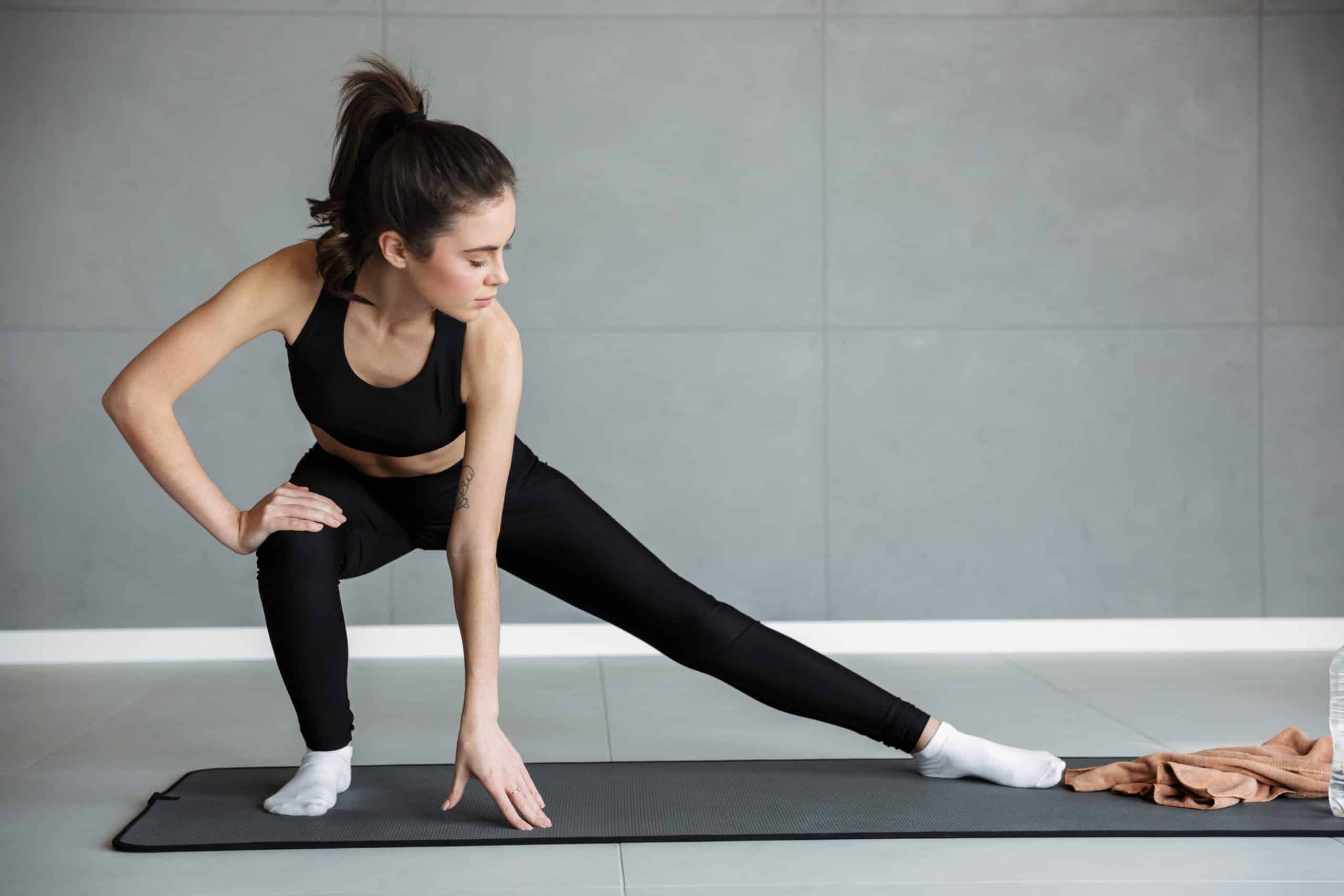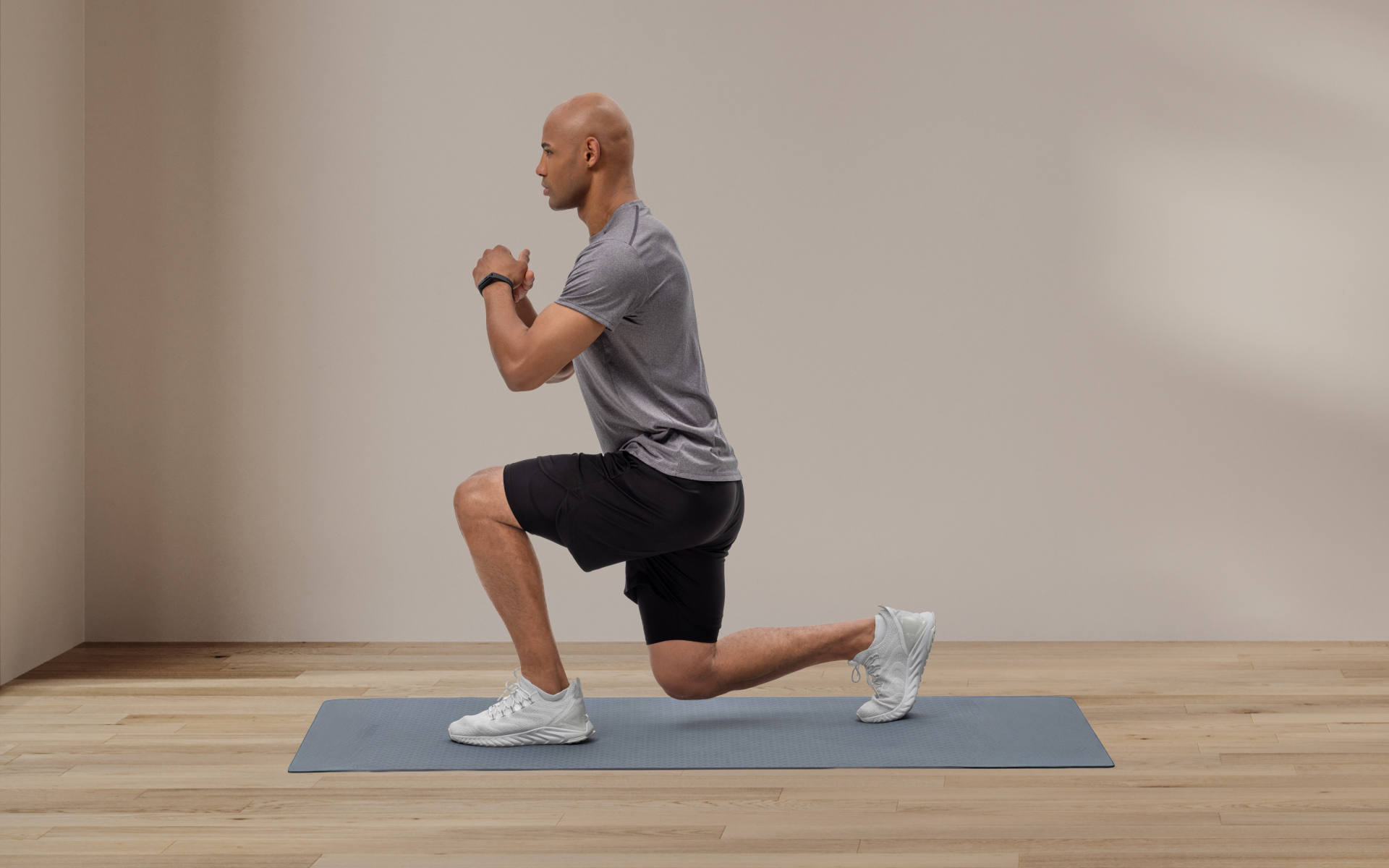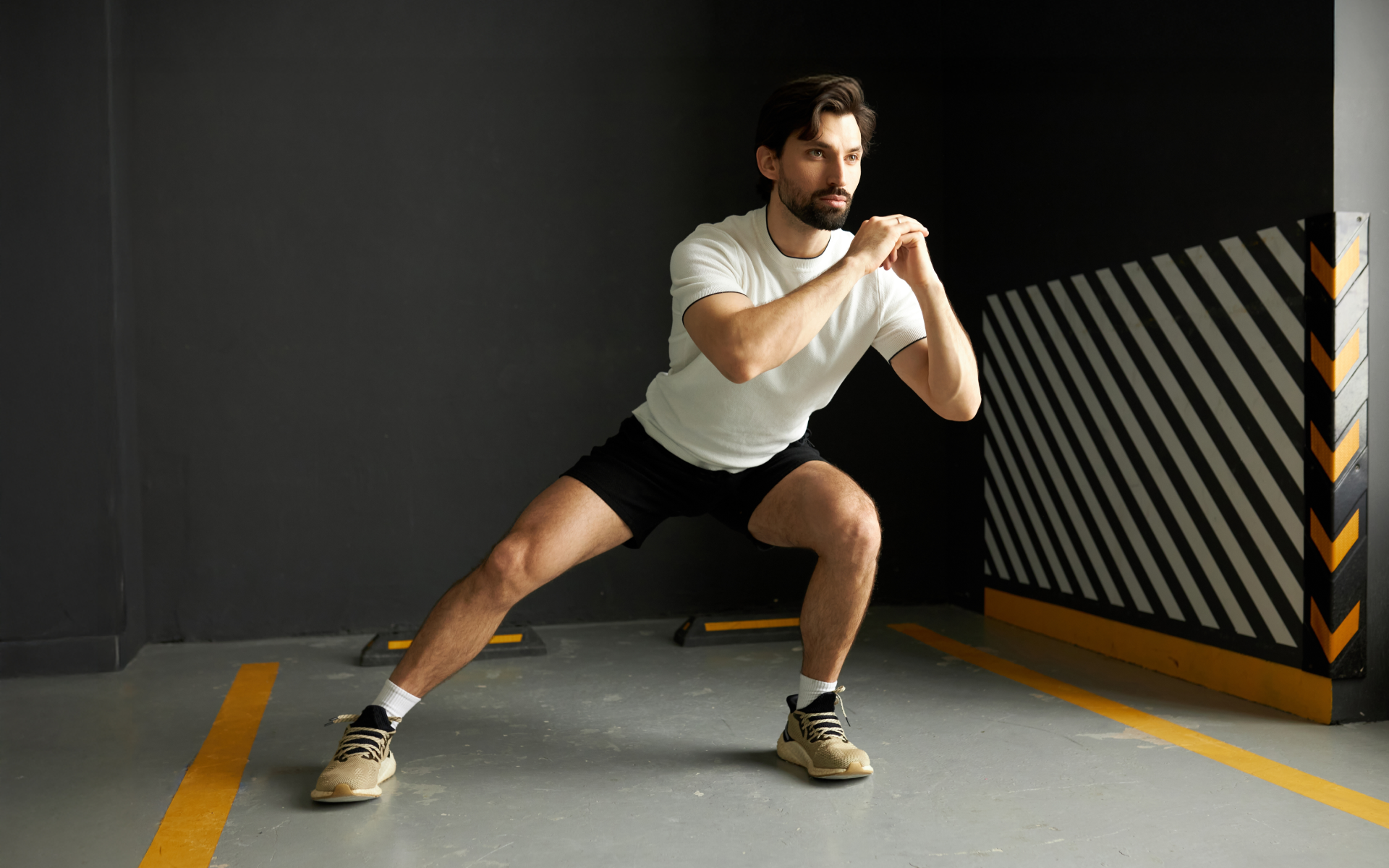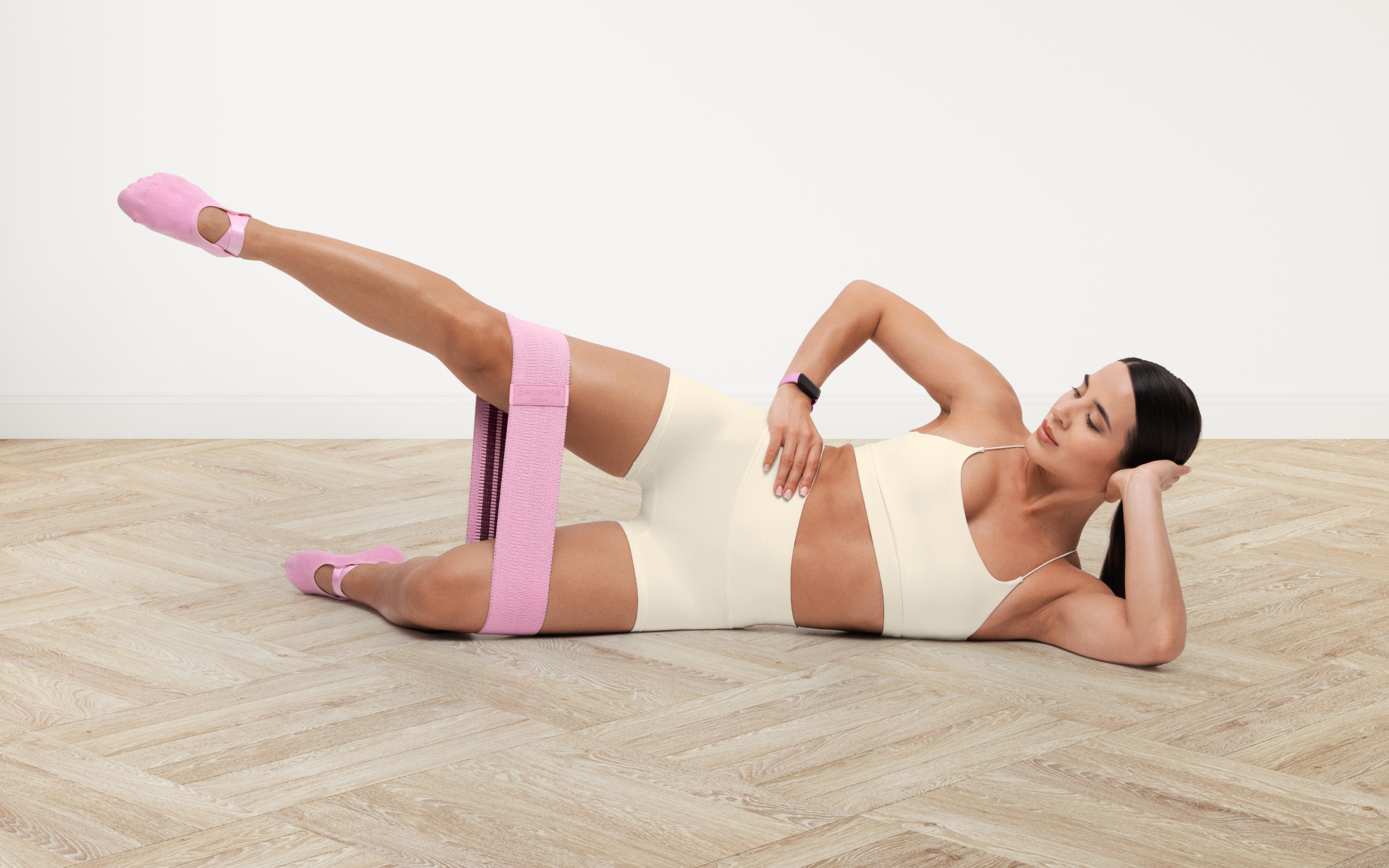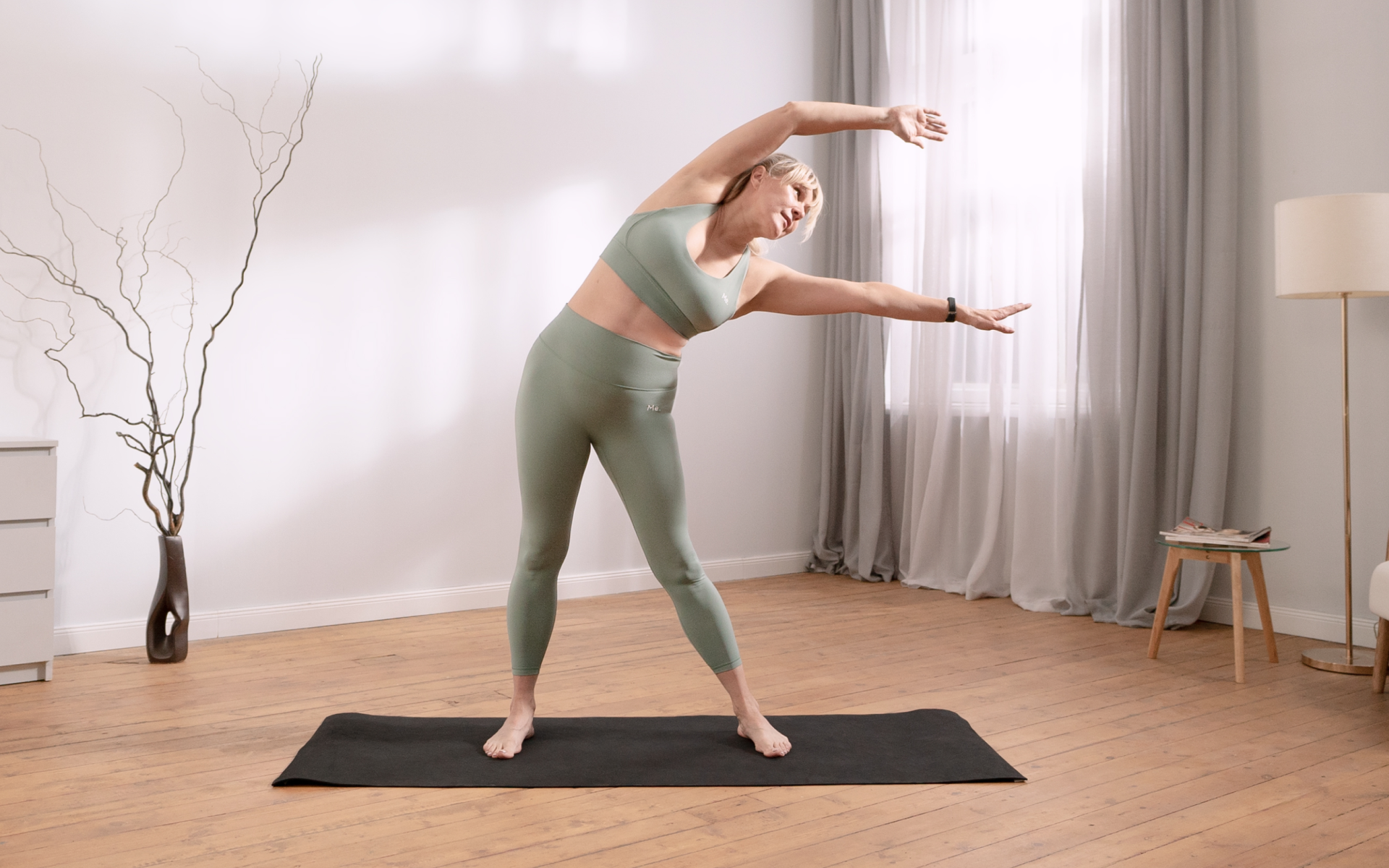Strong and healthy ankles are essential for everyday activities such as walking, running, and jumping. They also play a crucial role in sports performance, helping you to move quickly and change direction with ease (1).
However, ankle injuries are common among both athletes and non-athletes. According to the American Academy of Orthopaedic Surgeons, approximately 25,000 people sprain their ankles every day in the United States (2). Ankle sprains are not only painful but can also lead to long-term complications if not treated properly (3).
That’s why it’s crucial to incorporate ankle strengthening exercises into your fitness routine. These exercises help to improve balance, stability, and mobility in your ankles, reducing the risk of injury.
What Causes Weak Ankles?
Weak ankles can be caused by a variety of factors, including:
- Previous ankle injuries
- Poor balance and stability
- Tight calf muscles
- Lack of ankle mobility
- Wearing improper footwear
Previous Ankle Inфjuries
If you’ve sprained your ankle before, chances are it may still feel weak or unstable. This is because a previous injury can weaken the ligaments and muscles surrounding the ankle joint, making it more susceptible to future injuries (3).
Poor Balance and Stability
Your balance relies heavily on strong ankles. If your ankles are weak, you may have trouble maintaining stability while standing, walking or running. This puts you at a higher risk of tripping or falling and potentially injuring your ankles.
Tight Calf Muscles
The muscles in your calves play a significant role in ankle movement and stability. When these muscles are tight, or strained they can restrict the range of motion in your ankles, making them more prone to injury (4).
Lack of Ankle Mobility
Ankle mobility refers to the ability of the joint to move freely and without restriction. If you have limited mobility in your ankles, it can lead to compensations in other areas of your body during physical activities, increasing the risk of injury (5).
Improper Footwear
Wearing shoes with poor support or an improper fit can also contribute to foot and ankle pain (6). This is because unsupportive shoes fail to provide proper stability and protection for the ankle joint, making it more vulnerable to injuries. Additionally, shoes with too much support can cause the underdevelopment of the muscles of your feet. This can also directly impact ankle strength.
BetterMe: Health Coaching app helps you achieve your body goals with ease and efficiency by helping to choose proper meal plans and effective workouts. Start using our app and you will see good results in a short time.
How Do You Strengthen a Weak Ankle?
The first step to strengthening a weak ankle is consulting with a healthcare professional to determine the underlying cause of your weakness. Once you have a better understanding of why your ankles are weak, you can begin incorporating specific exercises into your routine to target those areas.
With the approval of a physiotherapist or sports therapist, you may perform specific ankle strengthening exercises at home.
Here are 13 ankle strengthening exercises, recommended by the NHS (National Health Service), that can help you avoid injury and improve the strength and stability of your ankles (7):
- Towel Scrunches
- Isometric (No movement) Ankle Eversion
- Isometric (No movement) Ankle Inversion
- Plantar flexion with resistance band
- Dorsiflexion with resistance band
- Eversion with Resistance Band
- Inversion with Resistance Band
- Tibialis Posterior with Resistance Band
- Seated Soleus Raises
- Seated Toe Taps
- Weighted Soleus Raises – off the edge of a step
- Standing Calf Raises
- Single leg Calf Raise
Towel Scrunches
Towel scrunches are designed to strengthen the small muscles in the arches of your feet and the stabilizing muscles around your ankles. This exercise enhances foot coordination and stability.
Steps:
- Sit in a chair with both feet flat on the floor.
- Place a towel on the floor in front of you.
- Position one foot at one end of the towel.
- Use your toes to scrunch and pull the towel toward you.
- Continue until you have scrunched the entire length of the towel.
- Repeat with the other foot.
- Perform 12-20 scrunches per foot, 4-5 times a day.
Isometric Ankle Eversion (No Movement)
Isometric ankle eversion helps strengthen the peroneal muscles on the outer side of the ankle, improving lateral stability and reducing the risk of sprains.
Steps:
- Sit or lie down comfortably.
- Press the outer edge of your foot against a sturdy object (e.g., a wall or heavy piece of furniture) without allowing the ankle to move.
- Hold the position for 10 seconds.
- Release and rest briefly.
- Repeat the process.
- Perform 12-20 holds per foot, 4-5 times a day.
Isometric Ankle Inversion (No Movement)
Isometric ankle inversion targets the tibialis posterior muscle on the inner side of the ankle, enhancing medial stability and support.
Steps:
- Sit or lie down comfortably.
- Press the inner edge of your foot against a sturdy object (e.g., a wall or heavy piece of furniture) without moving the ankle.
- Hold the position for 10 seconds.
- Release and rest briefly.
- Repeat the process.
- Perform 12-20 holds per foot, 4-5 times a day.
Read more: Calisthenic Leg Workouts Tailored for Women to Get Fit and Fierce!
Plantar Flexion with Resistance Band
Plantar flexion exercises with a resistance band strengthen the calf muscles, particularly the gastrocnemius and soleus, which support ankle movement and stability.
Steps:
- Sit on the floor with your legs extended.
- Loop a resistance band around the ball of one foot, holding the ends in your hands.
- Press your foot downwards, pointing your toes away from your body.
- Slowly return to the starting position.
- Repeat with the opposite foot.
- Perform 12-20 repetitions per foot, 4-5 times a day.
Dorsiflexion with Resistance Band
Dorsiflexion exercises with a resistance band focus on the anterior tibialis muscle, which helps lift the foot and stabilize the ankle.
Steps:
- Sit on the floor with your legs extended.
- Secure the resistance band to a stable object and loop it around your foot.
- Pull your toes back towards your shin while keeping your heel on the floor.
- Slowly return to the starting position.
- Repeat with the opposite foot.
- Perform 12-20 repetitions per foot, 4-5 times a day.
Eversion with Resistance Band
Eversion exercises using a resistance band target the peroneal muscles along the outside of the ankle, enhancing lateral strength and stability.
Steps:
- Sit on the floor with your legs extended.
- Secure one end of the resistance band to a stable object and loop the other end around the outside of your foot.
- Push your foot outward against the resistance band.
- Slowly return to the starting position.
- Repeat with the opposite foot.
- Perform 12-20 repetitions per foot, 4-5 times a day.
Inversion with Resistance Band
Inversion exercises with a resistance band strengthen the tibialis posterior muscle on the inner side of the ankle, improving medial support and balance.
Steps:
- Sit on the floor with your legs extended.
- Secure one end of the resistance band to a stable object and loop the other end around the inside of your foot.
- Pull your foot inward against the resistance band.
- Slowly return to the starting position.
- Repeat with the opposite foot.
- Perform 12-20 repetitions per foot, 4-5 times a day.
Tibialis Posterior with Resistance Band
This exercise targets the tibialis posterior muscle, crucial for foot arch support and overall ankle stability.
Steps:
- Sit on the floor with your legs extended.
- Secure one end of the resistance band to a stable object and loop the other end around your foot.
- Pull your foot inward and downward against the resistance band.
- Slowly return to the starting position.
- Repeat with the opposite foot.
- Perform 12-20 repetitions per foot, 4-5 times a day.
Seated Soleus Raises
Seated soleus raises strengthen the soleus muscle, an important muscle located deeper in the calf that supports the ankle and lower leg.
Steps:
- Sit on a chair with your feet flat on the floor.
- Place a weight or resistance band across your knees.
- Raise your heels off the floor while keeping your toes planted.
- Slowly lower your heels back to the starting position.
- Repeat the process.
- Perform 12-20 raises, 4-5 times a day.
Seated Toe Taps
Seated toe taps are designed to strengthen the anterior tibialis muscle, aiding in dorsiflexion and overall ankle stability.
Steps:
- Sit in a chair with your feet flat on the floor.
- Lift your toes off the ground while keeping your heels planted.
- Tap your toes on the floor repeatedly.
- Continue for the desired number of repetitions.
- Perform 12-20 taps per foot, 4-5 times a day.
Reasons why BetterMe is a safe bet: a wide range of calorie-blasting workouts, finger-licking recipes, 24/7 support, challenges that’ll keep you on your best game, and that just scratches the surface! Start using our app and watch the magic happen.
Weighted Soleus Raises – Off the Edge of a Step
This exercise focuses on the soleus muscle in the calf by adding more resistance and extending the range of motion.
Steps:
- Stand on the edge of a step with your heels hanging off.
- Hold a weight in your hands for added resistance.
- Raise your heels as high as possible.
- Slowly lower your heels below the step level.
- Repeat the process.
- Perform 12-20 raises, 4-5 times a day.
Standing Calf Raises
Standing calf raises target the gastrocnemius and soleus muscles, enhancing overall calf strength and ankle stability.
Steps:
- Stand with your feet hip-width apart.
- Slowly rise onto your toes, lifting your heels off the ground.
- Hold the position for a moment.
- Lower your heels back to the starting position.
- Repeat the process.
- Perform 12-20 raises, 4-5 times a day.
Single Leg Calf Raise
Single-leg calf raises provide an added challenge by isolating each calf muscle, promoting balance and unilateral strength.
Steps:
- Stand on one leg with your knee slightly bent.
- Slowly rise onto your toes, lifting your heel off the ground.
- Hold the position for a moment.
- Lower your heel back to the starting position.
- Switch legs and repeat.
- Perform 12-20 raises per leg, 4-5 times a day.
How Long Does It Take To Strengthen Ankles?
You might start to notice some improvements in ankle strength and stability after 4-6 weeks if you follow a consistent and varied exercise routine.
However, achieving optimal strength and stability could take up to 3-6 months or longer, especially if you’re working on correcting a significant weakness or recovering from an injury.
Strengthening your ankles typically takes several weeks to a few months, depending on various factors such as the current strength of your ankles, the consistency of your exercise regimen, and any existing injuries or conditions:
- Consistency: Performing ankle-strengthening exercises consistently (4-5 times a day, as recommended) can lead to noticeable improvements in a few weeks. For lasting results and significant strengthening, it is crucial to maintain this routine over a longer period.
- Starting Point: If your ankles are weak or you’re recovering from an injury, it might take longer to see substantial improvement compared to someone who is starting from a stronger baseline.
- Exercise Variety: Incorporating a variety of exercises targeting different muscles around the ankle can accelerate the strengthening process. This includes exercises for plantar flexion, dorsiflexion, eversion, and inversion.
- Progressive Overload: Gradually increasing the intensity or resistance of your exercises (e.g., using heavier weights or stronger resistance bands) can help build strength more effectively over time.
- Body’s Adaptation: The body’s ability to adapt to new stressors varies from person to person. Some may see improvements within a few weeks, while others may need several months.
- Rest and Recovery: Allowing adequate rest between workouts is essential for muscle recovery and growth. Overworking your muscles without proper recovery can lead to setbacks.
Read more: A Beginner’s Guide to Wall Pilates Double Leg Stretch
Does Walking Strengthen Ankles?
Yes, walking can help strengthen your ankles, although it may not be as targeted or intensive as specific ankle-strengthening exercises done in the gym.
Here’s how walking benefits your ankles:
Muscle Engagement
Walking engages various muscles in your feet and lower legs, including the calves, tibialis anterior, peroneals, and intrinsic foot muscles. This helps improve overall muscle tone and endurance (8).
Joint Mobility
Regular walking promotes healthy joint function by maintaining a range of motion in the ankle joints. This can help prevent stiffness and improve flexibility (9).
Balance and Coordination
Walking, especially on uneven surfaces, challenges your balance and coordination, which can help improve proprioception (your body’s ability to sense its position in space) and reduce the risk of falls (10).
Weight-Bearing Exercise
As a weight-bearing activity, walking helps in maintaining bone density and strength, which is essential for overall ankle stability (11).
If you’d like to use walking for ankle strengthening exercises after a sprain, get approval from your doctor or physical therapist before starting. Walking may be too challenging for some individuals with severe ankle injuries and may require a more gradual progression to avoid further injury.
Here are some tips that may help:
- Vary Terrain: Walk on different surfaces like grass, sand, and trails to engage your ankle muscles more dynamically.
- Increase Intensity: Gradually increase the intensity of your walks by incorporating hills or stairs to challenge your ankles further.
- Mindful Walking: Focus on proper walking form, including heel-to-toe rolling motion, to ensure that you are engaging the right muscles.
- Footwear: Wear supportive shoes that provide good arch support and cushioning to minimize undue stress on your ankles.
While walking is beneficial for overall health and can contribute to stronger ankles, it should ideally be complemented with specific ankle-strengthening exercises to achieve optimal results.
Exercises like those mentioned earlier (e.g., towel scrunches, resistance band work) directly target the muscles supporting the ankle and can lead to significant improvements in strength and stability.
FAQs
Can Ankle Weaknesses Be Corrected?
Ankle weaknesses can be corrected with consistent and targeted exercise, often prescribed by a physical therapist. However, the time it takes to correct ankle weakness varies depending on various factors such as the severity of the weakness and any underlying conditions or injuries.
Is Cycling Good for Ankles?
Yes, cycling can help strengthen your ankles and improve their range of motion. It is a low-impact activity that engages the muscles in your lower legs, effectively without putting excessive stress or impact on your joints.
However, it may be more beneficial to use cycling as a supplement to targeted ankle-strengthening exercises rather than relying solely on it for ankle strengthening.
What Do Weak Ankles Look Like?
Weak ankles can manifest through various signs and symptoms, both visually and functionally.
Some visual signs of weak ankles include:
- Swelling: Chronic swelling around the ankles, often due to repeated minor injuries or poor circulation, can be a sign of weakness.
- Instability: A noticeable wobble or lack of steadiness when standing or walking, indicating that the muscles and ligaments are not providing sufficient support.
- Misalignment: If your ankles appear to lean inward (pronation) or outward (supination) excessively, it can suggest muscular imbalance or weakness.
- Atrophy: Reduced muscle bulk in the lower legs and around the ankles might indicate that the muscles are not being used effectively.
- Skin Changes: Chronic issues with weak ankles can sometimes lead to skin discoloration, bruising, or even changes in texture around the ankle area.
Some functional signs of weak ankles include:
- Frequent Sprains: Regularly rolling or spraining your ankle is a clear indication that the ligaments and muscles are not providing adequate stability.
- Pain and Discomfort: Persistent pain in the ankle area, especially after walking, running, or standing for long periods, can be a sign of underlying weakness.
- Limited Range of Motion: Difficulty moving the ankle through its full range of motion, including pointing the toes or flexing the foot upward.
- Balance Issues: Struggling to maintain balance on uneven surfaces or even during simple activities like walking or standing on one leg.
- Fatigue: Ankle and foot muscles tiring quickly during activities, leading to an increased risk of injury as they can’t sustain prolonged effort.
You may observe the following clues during activity that suggest you have weak ankles:
- Gait Abnormalities: An altered walking pattern, such as limping or favoring one foot over the other, can indicate compensatory mechanisms due to ankle weakness.
- Difficulty with Single-Leg Stance: Inability to stand on one leg for more than a few seconds without wobbling or needing external support.
- Difficulty with Athletic Activities: Struggling with sports or exercises that require quick changes in direction, jumping, or other dynamic movements.
Do Squats Strengthen Ankles?
Yes, squats can help strengthen your ankles, although their primary focus is on the muscles of the lower body, such as the quadriceps, hamstrings, and glutes.
During a squat, several muscles around the ankle, including the calf muscles (gastrocnemius and soleus) and the muscles in the feet, are activated to stabilize and balance your body.
Squats require coordination and control, which engages the stabilizing muscles and ligaments around the ankle joint. This helps improve overall joint stability.
Performing squats, especially on different surfaces or with variations like single-leg squats, enhances proprioception (your body’s ability to sense its position), which is critical for ankle stability.
Lastly, squats promote ankle dorsiflexion (the movement of bringing the toes closer to the shin), which can improve flexibility and range of motion in the ankle joint.
The Bottom Line
Ankle strengthening exercises can help prevent injuries, improve balance and stability, and enhance athletic performance.
However, it is essential to consult with a healthcare professional before starting any exercise regimen for weak ankles. They can evaluate your specific needs and recommend the most suitable exercises for you.
Remember to start slowly and gradually increase the intensity of your workouts to avoid overexertion or re-injury.
DISCLAIMER:
This article is intended for general informational purposes only and does not serve to address individual circumstances. It is not a substitute for professional advice or help and should not be relied on for making any kind of decision-making. Any action taken as a direct or indirect result of the information in this article is entirely at your own risk and is your sole responsibility.
BetterMe, its content staff, and its medical advisors accept no responsibility for inaccuracies, errors, misstatements, inconsistencies, or omissions and specifically disclaim any liability, loss or risk, personal, professional or otherwise, which may be incurred as a consequence, directly or indirectly, of the use and/or application of any content.
You should always seek the advice of your physician or other qualified health provider with any questions you may have regarding a medical condition or your specific situation. Never disregard professional medical advice or delay seeking it because of BetterMe content. If you suspect or think you may have a medical emergency, call your doctor.
SOURCES
- Biomechanics of the ankle (2016, ncbi.nlm.nih.gov)
- Ortho-pinion – Ankle Sprains (2019, orthoinfo.aaos.org)
- Recurrent Ankle Sprain (2023, ncbi.nlm.nih.gov)
- Gastrocnemius Strain (2023, ncbi.nlm.nih.gov)
- A 3-Step Approach to Improve Ankle Mobility (2021, issaonline.com)
- Incorrectly fitted footwear, foot pain and foot disorders: a systematic search and narrative review of the literature (2018, onlinelibrary.wiley.com)
- Ankle strengthening exercises – Patient advice sheet (2020, nhs.uk)
- Walking in Minimalist Shoes Is Effective for Strengthening Foot Muscles (2019, journals.lww.com)
- 8 Ways Exercise Helps Your Joints (n.d., arthritis.org)
- Lower-limb coordination and variability during gait: The effects of age and walking surface (2022, sciencedirect.com)
- Exercise and Bone Health (2020, orthoinfo.aaos.org)
